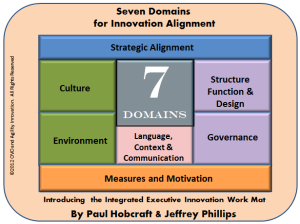The third and final part of exploring knowledge and education for innovation.
Part three – the value is in changing, doing and exchanging
How are we going to engage more people within the innovation process? Getting people involved is getting people “doing”. We learn far more when we are doing and gaining experience yet organizations are always in seems to me consciously or unconsciously reducing the experimental part to any persons learning.
We need to reverse this and simply encourage the exploring of new skills, gaining new experiences and probing established rules to value them but also to challenge and push them. Innovation is certainly not a friend to rules, established protocols and traditions.
‘It’ looks to attract the diverse opinions, the people willing to speak up and be heard as they often have observed and feel something can be changed and ‘itch’ for the chance to explore and learn from this.
Coupling, uncoupling and recoupling in complex systems
Innovation is a complex system where the coupling, uncoupling and re-coupling of technology, design, product, organization, art and science, to name just a few of the parts, that need to constantly engage for good worthwhile innovation to happen, is important for us to recognize.
Organizations have real difficulties with this ‘fluid need’ to allow innovation to evolve as the natural tendencies are to apply, traditional, established ways to track, to attempt to ‘file away’ something that can be related too within the experiences.
This is why encouraging enquiry, by pushing experiences you ‘form’ less and ‘allow’ more to evolve before you make the judgement. Innovation needs to be allowed to stay ‘fluid’ as long as possible before the final commercial ‘freeze’ moment when all the combinations emerge as new to the world. Continue reading “Reducing confusion, promoting diffusion for new knowledge in innovation”
